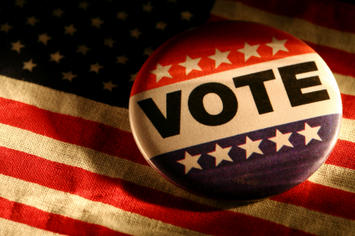
Consider the following two apparently contradictory sets of statistics:
From the Republican convention and much of the media, you’d get the impression that class voting has turned upside down—that the Democrats are the party of the “elite” and the Republicans the new friends of the “working class”.
 But the ACTUAL voting behavior in 2004, when Republicans did especially well at making inroads among socially conservative, less affluent households. Consider the accompanying chart, where Bush dominated Kerry in households making more than $100,000.
But the ACTUAL voting behavior in 2004, when Republicans did especially well at making inroads among socially conservative, less affluent households. Consider the accompanying chart, where Bush dominated Kerry in households making more than $100,000.
And according to McCain, $200000 is solidly middle class!
This looks like “economic class“ still matters!
But then look at the following equally CORRECT statistics, (courtesy of Fred Shelley, U Oklahoma:

The purple states are the current tossup states: CO, FL, IN,MI, NH, NV, NM, NC,OH,VA
So is it true, contrary to the 2004 national data, that states that are richer and more educated tend Democratic (blue) and those with less educated and poorer folks lead Republican (red)? How can both sets of data be true?
The answer lies in the math. The first set uses INDIVIDUALS, while the second uses average, aggregate values. Making inferences from averages risks what statisticians call the “ecological fallacy” , attributing to everyone the value of an average, from what in reality is probably a very heterogeneous (highly variable) population.
Blue states like CA, WA, NY or MA have high average levels of income and education, but we do not know the distribution of votes for D and R by varying levels of education and income. So to reconcile the two sets of statistics, it is reasonable to assume that despite high average levels, the more educated and wealthier are more likely to vote Republican, the less educated and poorer more likely to vote Democratic.
For example, consider state A (big metropolitan) and state B (non-metro, small town, rural):

A has a larger share of richer than average voters than B, but it’s a big metro state while B is a smaller rural, small city state. Richer voters tend R in both and poorer voters tend to vote D in both states, but the R share is higher for all classes in the non-metro state and D shares higher for both classes in the big metro state.
The other part of the story is geography, largely about the split between large metropolitan and small and non-metropolitan America. Over half the population lives in large metropolitan areas. These tend to have above average levels of education and income, as they are the control centers of society, but they also have the large majority of racial and ethnic minorities and of the poor--- which are the real numerical base of the Democratic vote. Not that you would know it from either party’s rhetoric!
Now it is certainly true that a significant and increasing share of the educated affluent has shifted Democratic in the last decade or so; these folks are powerful and articulate and have effectively taken over the Democratic Party. We know from precinct level data that Democrats swept areas with highly educated professionals, especially around universities, but Republicans continued to dominate wider areas, especially suburban and exurban, of the more managerial affluent.
Generally speaking, the Democratic “elite” overestimates its own numbers, and often unintentionally pursues policies hurtful to the poor and lower middle classes. This can be seen in the elite’s indifference to the less affluent and educated Democratic base as demonstrated by their emphasis on the virtues of dense urban, “green” living. This agenda often results in gentrification, displacement of the poor and minorities. Elite democrats also ignore ---except perhaps at election time --- job competition from massive immigration, legal and illegal, the ravages of excess globalization, and out of sight housing prices.
The 2004 election data shows that the historic base of the Democratic party is not gone, at least in large metropolitan America. Middle and working class white voters in the suburbs and exurbs still matter. Obama cannot win unless that base is reassured and respected.
Richard Morrill is Professor Emeritus of Geography and Environmental Studies, University of Washington. His research interests include: political geography (voting behavior, redistricting, local governance), population/demography/settlement/migration, urban geography and planning, urban transportation (i.e., old fashioned generalist).













192.168.1.1
192.168.1.1
You created some decent
You created some decent points there.192.168.1.254
college paralegal programThe
college paralegal programThe law industry has great opportunities to flourish as a professional. Any career in this field is sure to bring financial success and satisfaction. So if you are one of those who want the absolute best then it is time for you to join college paralegal program at Academy of Learning.